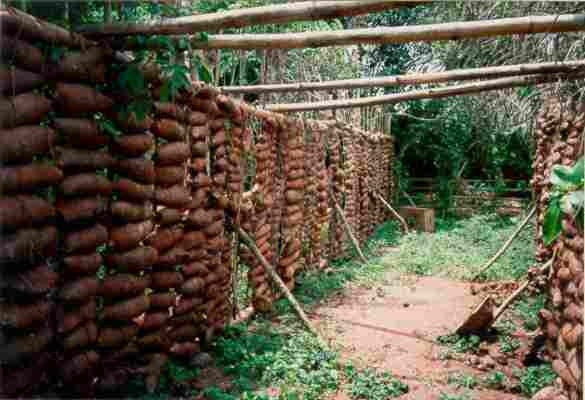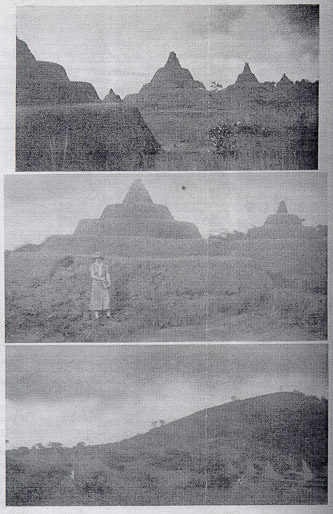|
MADE-TO-MEASURE C18th-C19th TOBACCO-PIPES
IN SOUTH NIGERIA
|
|
 |
|
|
These tobacco-pipes used a long hollow stick in
one side whilst the pipe rested on the ground and the smoker squatted.
Many of these pipes are worn along the bottom and have spittle drainage
holes. These pipes were found in a midden heap outside the town wall,
not in a local domestic borrow-pit - an important distinction between town
and village contexts. |
|
|
|
|
|
SHRINE POTS
|
|
|
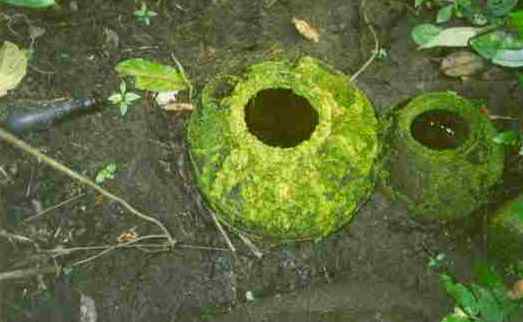 |
|
|
SHRINE POTS under
an oil-palm which reverted to a wild version with 16 heads when Old Owu
was deserted between about 1826 and the 1930's. If ever found in archaeological
contexts, such pots would be inexplicable, as the biological rationale
for a shrine here would have disappeared. The local gin bottle on the left
is used in libations - alcohol here as elsewhere provides a short-cut to
the spirit world (hence 'spirits' to describe strong alcohol).
See Orile
Owu for more details
|
|
|
|
|
|
AGRICULTURAL FERTILITY
|
|
|
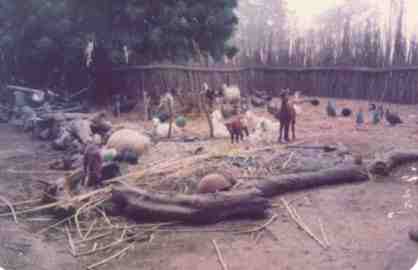
|
|
|
GOATS, supposedly the harbingers of environmental
destruction, provide the key to environmental enhancement in the Kano close-settled
zone - an extensive, densely populated area in the semi-arid zone of northern
Nigeria. Tethered (above) during the rainy season when crops are growing,
their dung is gathered to make taki (manure), which is then placed
on the fields under permanent cultivation. Over the centuries, more people
has resulted in more goats, more
taki, better soils, higher crop
yields and more trees - the last being mainly gawo (Faidherbia
albida), as this provides browse for the goats when it leafs during
the dry season. This is just one of many examples, which qualify many of
the negative arguments about the population/environment interface.
See Kano
walls for more details of this area
|
|
|
|
|
|
WATERPOTS
|
|
|
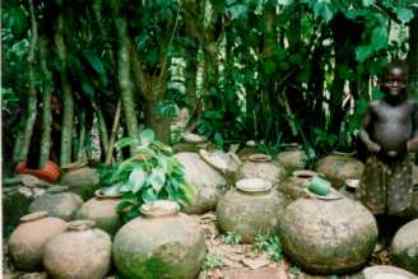
|
|
|
See Udo
water storage for more details
|
|
